An important aspect of any outdoor design is choosing the right stone steps that will withstand conditions all year round whilst providing a safe non slip surface. What makes stone steps slippery and how can we make them nonslip?
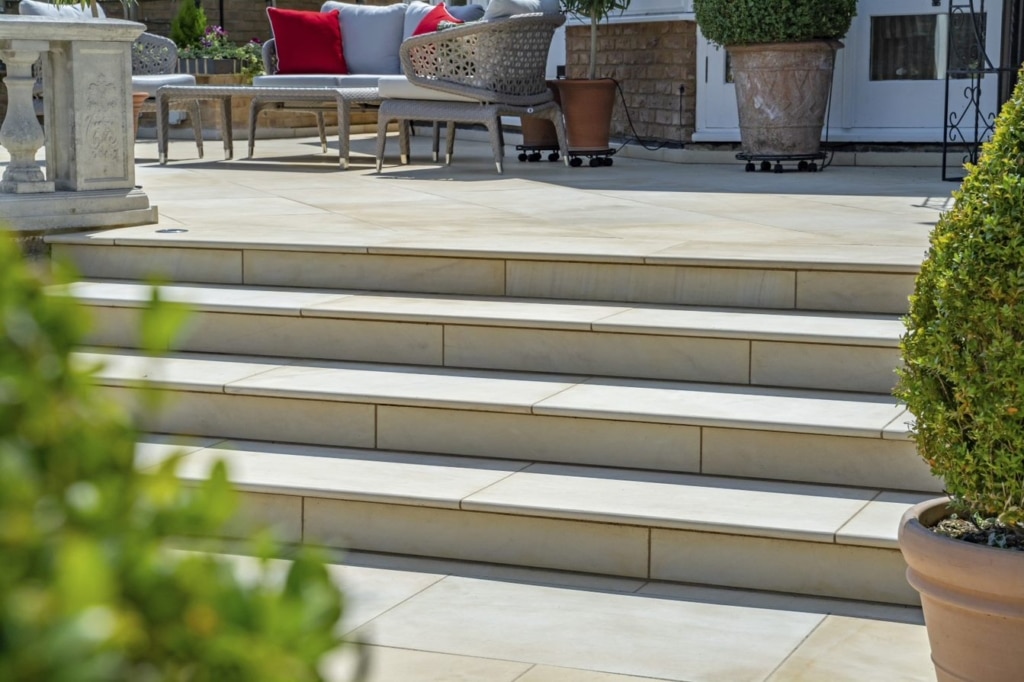
Being in the UK, it means we are very familiar with rain and its subsequent effect of making everything a potential slip hazard. A stone that does not become slippery every time it rains should be used in order to avoid any accidents.
When sandstone becomes wet, it becomes more slip resistant than when it is dry, making the surface finish less important than it is with other types of stones. Sandstones are more absorbent than other stones. When it is wet, a natural suction between the sole of a foot and the stone is created. By nature, sandstone is made from particles of sand and therefore a sawn piece of sandstone is like a fine piece of sandpaper which inevitably creates a nonslip finish.
A sawn limestone with no finish that is dense or hard will become slippery when wet. Limestone that is porous should not be used for steps as they fail in the winter when the frost hits them. They tend to fall apart from freezing. It is important to have the correct finish on limestone to give a good slip resistance.
Granite is not very porous so it tends to be slippery when wet as the aqua planning action happens. Whilst granite is a very durable stone, sawn granite with no finish will be unreliable in wet conditions. It needs the correct finish to make it nonslip.
When it comes to water, unfinished sawn limestone and granite will be slippery whilst sandstone naturally provides a slip resistance. All these stone can be altered in order to enhance or create a nonslip surface.
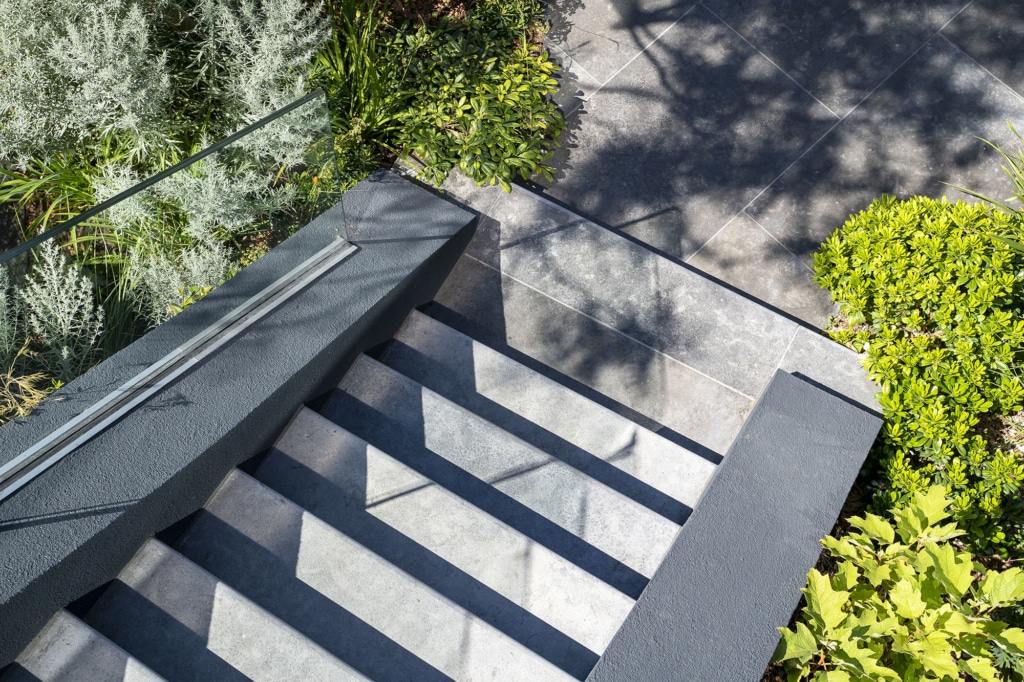
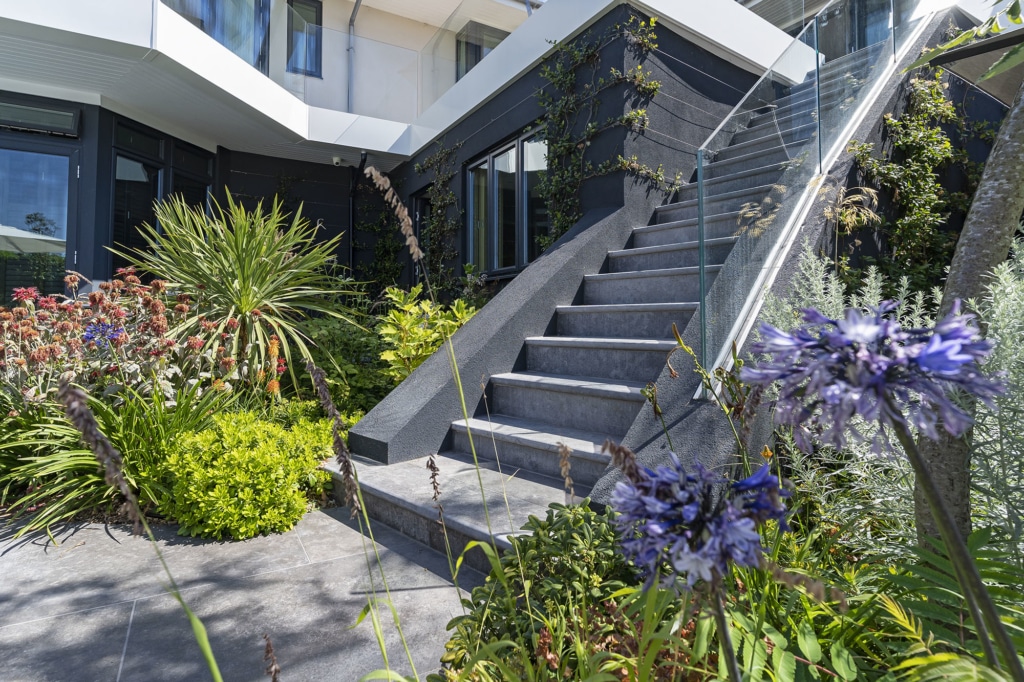
A polished surface or stone finish
Sandstones are created over millions of years with layers of sand and silica. Within the stone you can see seams where the materials change. The stones can be split with chisels on these seams and when doing this process, Riven sandstone is created. A riven sandstone is has as a natural cleft finish which is slip resistant in dry and wet conditions.
When sandstones are sawn, porous sandstones are naturally slip resistant. Dense or harder sandstone, for example, Kandla grey and raj green are slippery when wet. A surface treatment would need to be applied to make them nonslip. On sandstones, sandblasting and shot blasting is a process done to etch the surface and create a texture. Sandblasting will give a finer finish whereas shot blasting will give a more sever finish. This finish can be applied to all sandstones to give an enhanced slip resistance. Some sandstones can be flamed which blisters the surface to create slip resistance and an aesthetic looking stone.
Most limestones have a high fossil content which makes the stone difficult to split like sandstone. Most hard limestones and marbles are sawn. Sawn limestone is very slippery and requires a process to make the surface nonslip. As with sandstone, sand blasting and shot blasting are a solution along with flaming on some limestones. Flaming is not preferred as flaming can discolour the limestone. Another technique is to acid etch the limestone. This is done using strong acid which burns into the stone surface, creating an etched texture. This in turn creates a slip resistant surface. A honed or polished surface limestone will be dangerous in wet conditions.
Mud limestones, which come from India, are formed in fast moving waters and due to this are formed with very small particles. These stones can be split like sandstone and create a non-slip finish. They are naturally flatter and less uneven like the riven sandstone.
Sawn or polished granites become incredibly slippery when they get wet. The best treatment for granite, that enhances the stones beauty whilst making it slip resistant, is flaming. Some granites like amber granite from China cannot be flamed as it will change the stones natural colour. Other processes, such as bush hammering and sand blasting can be applied but the final finish will not be as nice.
Ultimately, any stone fit for purpose to be used outside in the UK can be used as step treads if they have the correct finished surface. Speak to Stoneworld to get advice on what stone steps to use to match your individual needs.
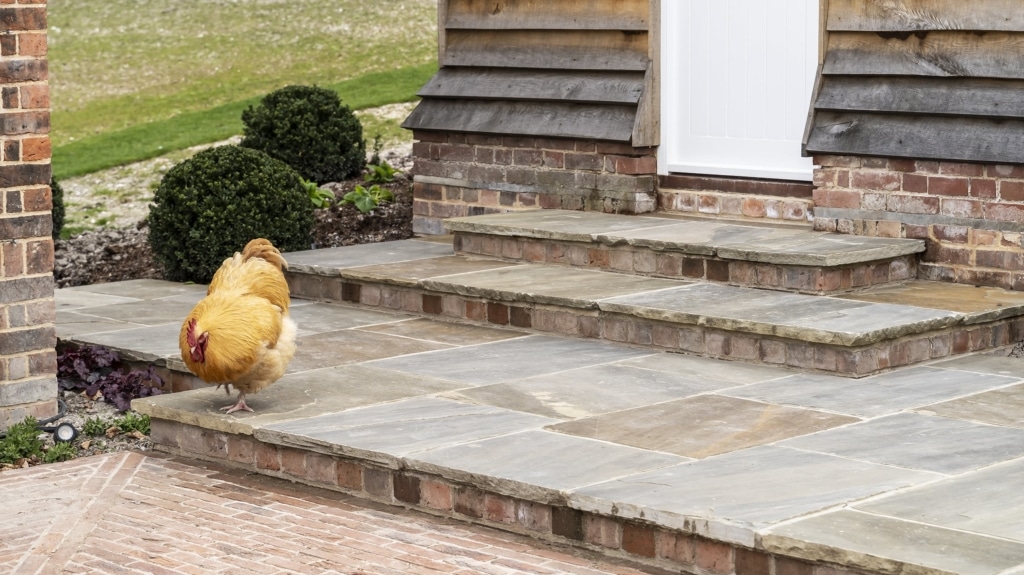
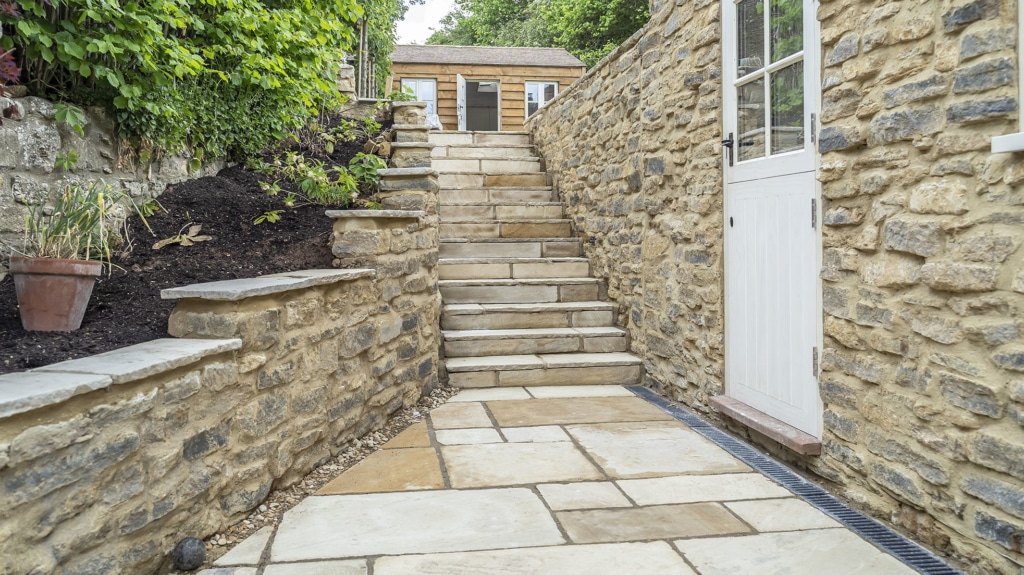
In the UK with freezing winters there is always the chance of solid ice forming on steps which makes them very dangerous. Regardless of stone or finish, all steps will be slippery. Our advise is to use white salt on all stone types to get rid of the ice. Stay away from using road salt on stone as the orange colour tends to stain the steps.
If oil is spilt, this will make steps dangerous, no matter the stone. Stoneworld offers a wide range of cleaning products, such as the RPB Heavy Duty Cleaner which will get rid of any oil and residue and prevent the steps from being slippery.
Algae can form on steps in sheltered North facing locations and can be removed by power washing. This process may harm the stone depending on its porosity so the best solution to algae or black spot is to use our RPB patio cleaner which will remove black spot or algae from the steps and stop it from reappearing for up to 12 months.
RPB products were formulated to be used on stone products, so as not to harm or discolour the natural stone.
You can find our full range of Rob Parker’s Best products here, or you can find out more about our stone steps and get started here.
Written by;
Rob Parker,
Managing Director
